The church of the three Peruvian saints
Hi everyone! I hope you are very good! Today I want to explain to you one of the most important convents and museums of my city, the Convent of Santo Domingo. It is located a block away from la plaza de armas.
The Convent of Santo Domingo had a very good location when the city was founded because the Dominican order was with Francisco Pizarro when they started to build the city of Kings, as Lima, my city, was known in the colonial age.

Inside the Convent of Santo Domingo, you can find a small chapel called la Capilla de Veracruz and a neoclassical and Renaissence church. At the altar, there is a retable that grabs the attention of everybody that glances at it. There are the remains of three Peruvian saints in that place.
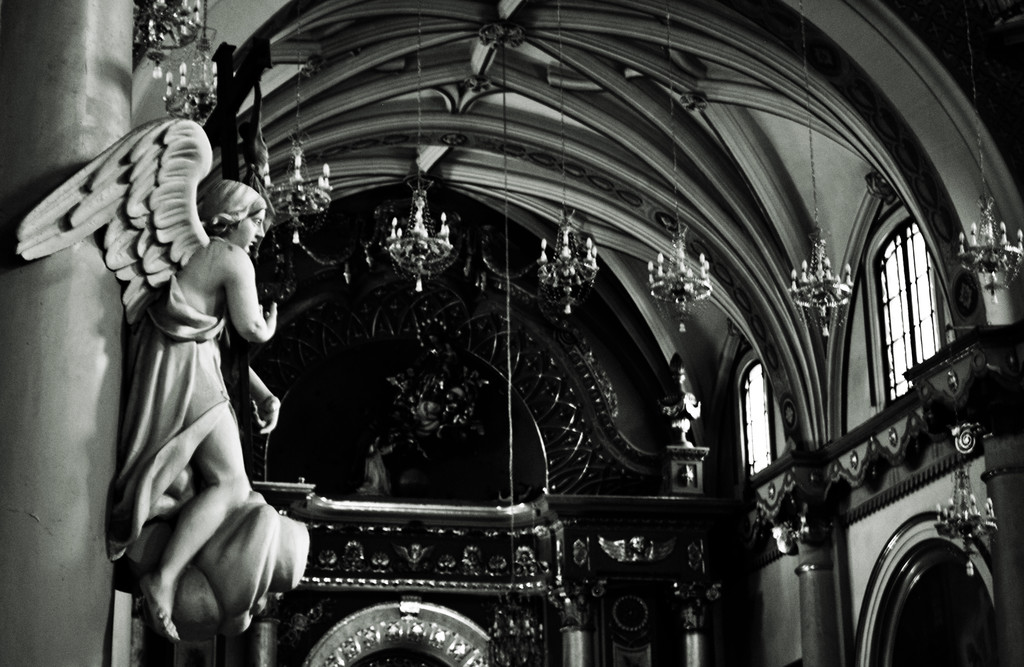
The retable of the three Peruvian saints inside the church of Santo Domingo
The first saint is Santa Rosa de Lima, patron saint of America and the Philippines. She was the first woman to become a saint in America. Next to her, you can find San Martín de Porres, who was one of the first saints of America. This Peruvian saint from the colonial age is the main character of many stories. A story that refers to peace in all circumstances tells us that he was able to join a dog, a cat and a mouse on one single plate. It is said that he could levitate while he prayed and he was able to teleport. I remember when I was a kid, I saw a film at school about him whose main actor was Mexican. The third and last identified saint is called San Juan Masías. He is not well-known around the country, possibly because he is not native as he was Spanish. However, he is considered a Peruvian more due to the enormous religious work he developed around the country when Peru was a Spanish colony. San Martín de Porres and Santa Rosa de Lima are, without a doubt, the most loved saints of Peru.
My district in Lima
Nowadays many zones of Lima are called by the name of these saints because of their big influence. For example, the second larger district of Lima is called San Martín de Porres, where my family lives. Next to la avenida Tacna you can find the famous Santa Rosa de Lima wishing well, where hundreds of believers throw cards with their wishes written hoping for a miracle in their lives. Moreover, the house of San Martín de Porres has become a charity point, where poor people come to ask for food daily.
New Research
Not far from now, the remains of the retable were extracted by Peruvian researchers to make an investigation in Brazil. Some believers were astonished because they will finally know the saints' faces after many centuries. Nowadays the reconstructions of Santa Rosa de Lima and San Martín de Porres are available whereas San Juan Matías is yet to be published.
Change of scene
When you get inside the church of the Convent of Santo Domingo you realize that the major altar has a neoclassical style due to the influence of Matías Maestro, one of the Spanish artists that came to Lima to renovate religious monuments. I like so much the baroque style as it looks so overloaded with, for example, its Solomonic pilasters where you can see fruits and leaves shapes that represent abundance. Within the cathedral of Lima, the name of Matías Maestro is present. He developed a lot of changes and he got rid of all the baroque pieces in Lima. Moreover, the first civil cemetery of Lima, known as one of the most beautiful museums around the region where you can find different neoclassical sculptures and crypts, has the same name as the Spaniard.
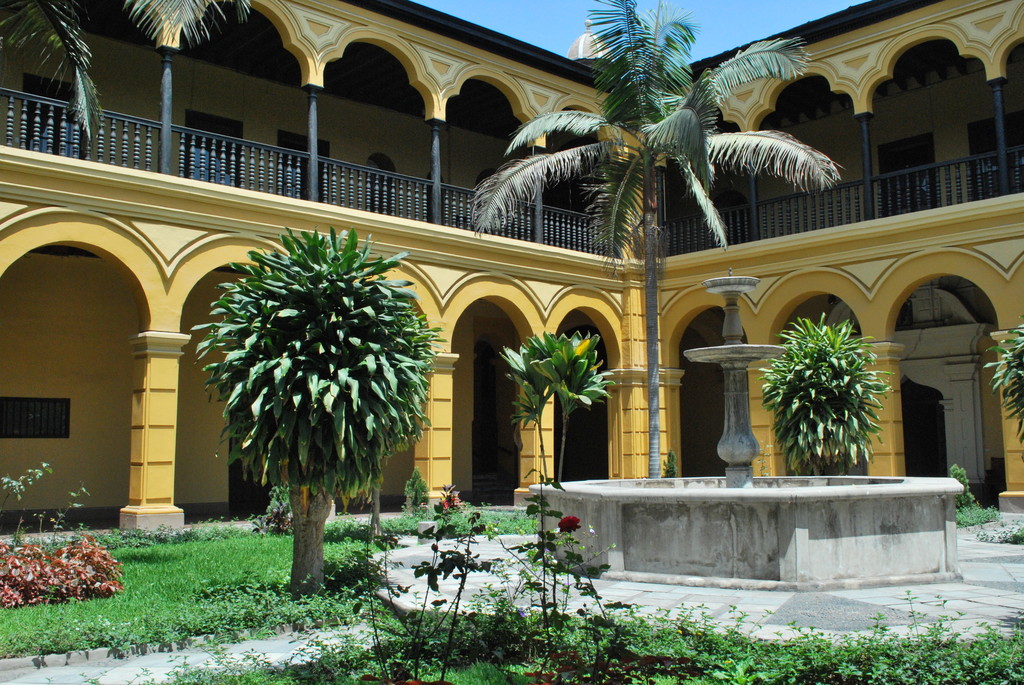
Anyway, the church of Santo Domingo is a truly artistic icon. It surprises the visitors from the very beginning. At the entrance, you can find the altar of the three Peruvian saints which makes the major altar look comparable.
Another monument which stands out from the external part of the convent of Santo Domingo is the tower, which is the star of many stories. Some time ago, the convent allowed visitors to go up to the top of the tower at night and enjoy the views, but nowadays it is not possible anymore. However, there are a lot of things to do in the church and it could easily be compared with the cathedral of Lima and the convent of San Francisco, where there are the famous catacombs in which I worked as a guide for three months. In addition, Santo Domingo has a French-like rosy tower with rococo details that people say that they appeared in a time troubled by a terrible event.
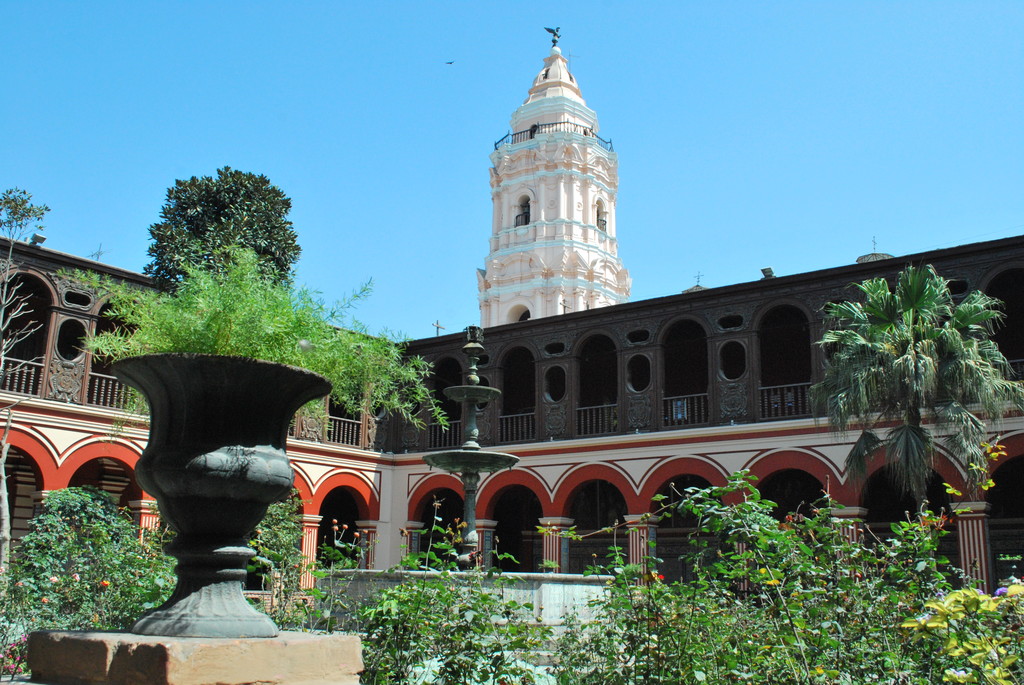
The great earthquake and the recovery of Lima
1746 is a year that Peruvians keep in mind because in an October night, there was an enormous seism that shook all the city of Lima and nearly destroyed it. From that day on, due to the fear of the citizens, houses with more than two floors were forbidden for many years.
Time after that event, Lima started to improve its aspect. An example is the street where the church of Santo Domingo is located. In the past, this street was known as superunda street because of all the buildings that the Viceroy (the representative of the Spanish king in Peru) ordered to be able to enhance the image of the city. Beautiful promenades were made, as the ones in the Rimac district, crossing the river of the center of Lima. They have been repaired recently to try to attract visitors to make them a new tourist attraction.
Indoor and outdoor museums
The Damero de Pizarro, a really nice historical part of the center is a World Heritage Site due to its great artistic value. Since I started studying tourism in Lima I have been reading about my city's history and I have tried to visit all the museums possible, but I have not gone to a few of them yet (there are around thirty museums only in the historical center). I am very happy to share with you these experiences and I hope you find it useful to know better every corner of the city.
The materials of the city
The materials used to build the temple of Santo Domingo are adobe, cane, lime and small rocks, the same as the majority of monuments of Lima. These materials were used to prevent buildings from earthquakes. As you might notice when you walk across the cloisters of Santo Domingo, you will see that some columns are leaning due to the jellied property of these combination of materials, which makes buildings resistant to seismic movements that have not occurred for many years.
Nowadays, Lima is a city with a population of nearly 10 million and the building methodologies are constantly renewed. I think that prevention is the key to avoid calamities such as the 1746 earthquake. The last big earthquake happened in 2007, when I started my internship as a guide of the center museum. Some of the columns were damaged, but they were immediately restored and the museum is open to public again.
The luxury library and its wood
The convent of Santo Domingo has a prominent ancient book collection of several languages. It is a special library because all the books are protected in glass chambers to make easier their conservation. At the entrance do not hesitate to look up at the delicately elaborated ceiling made of varnished wood.
One fact that shocked me when I worked as a guide was that most of the wood of Lima houses was imported from Central America. What was the reason? Why was not carried from the Peruvian jungle? The answer is easy. The Peruvian rainforest was inaccessible in the colonial age and the only way to get in was with religious missions to convert the indigenous. Consequently, it was easier to import wood from abroad. Why was the wood brought to Lima? Because Lima was the capital city of the most important Spanish viceroy and one of the most luxurious cities worldwide.
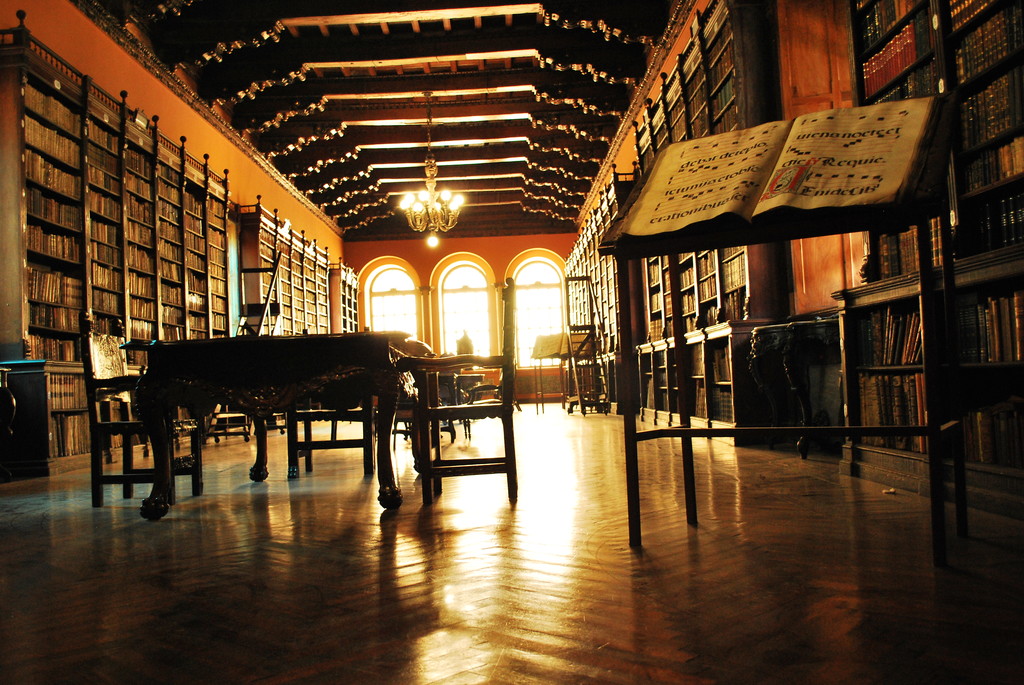
Santa Rosa made of marble
Inside the convent of Santo Domingo there is a wonderful sample of Santa Rosa de Lima being rescued by a small angel. This sculpture is made by genuine marble and you can appreciate its appearance. Moreover, you can distinguish its most remarkable characteristic. The scars of the self-flagelations received to feel the God extasis and its crown of thorns.
Her original name was Isabel Flores de Oliva, but the traditions from Lima say that her face was as beautiful as a rose and that is the reason why everybody knows her as Santa Rosa de Lima.
The cloister tiles
To enter the museum of Santo Domingo is to access to many stories and to see artworks such as the well-known Sevillian tiles that decorate every pilaster of the cloister. From the second floor you can see the wooden walls known as the Lima portholes. Apart from its gardens and a basin in the center of the cloister, inside the museum you can visit two cloisters more with its unique style.
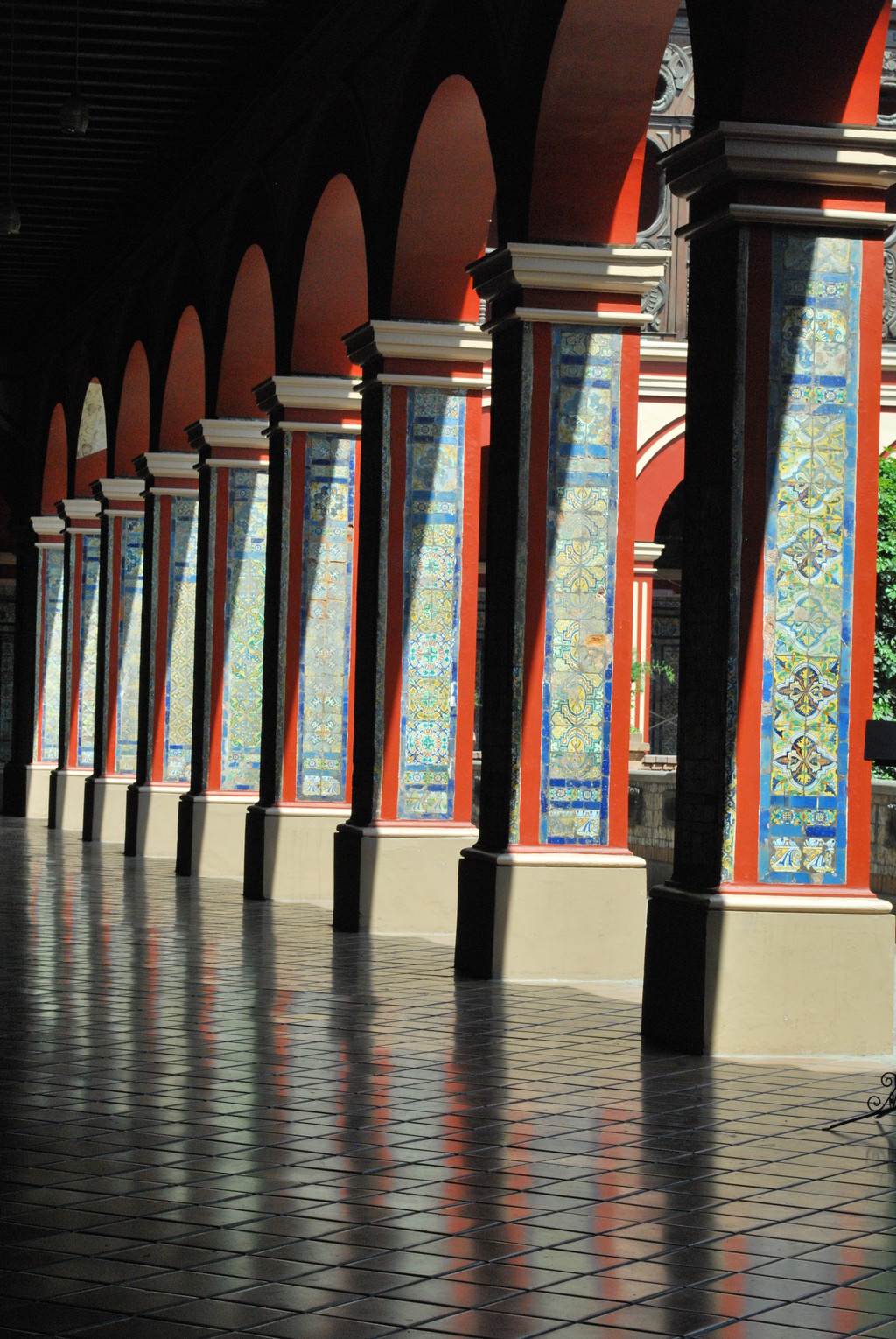
The first university of America
To finish, Santo Domingo was witness to the foundation of the first university of America. I refer to the Universidad Mayor de San Marcos, founded on May 12th 1551 inside its main hall. The convent was the place where the first lessons of the university where I belong were given. In addition, you can find the Santo Tomas de Aquino school, which I have not had the opportunity to enter.
Lastly, I post the entrance fees to the museum of Santo Domingo and its schedule:
- Monday a Sunday from 08:30h to 17:30h
- Adults: 5 Peruvian soles
- Students: 3 Peruvian soles
- Kids: 1 Peruvian sol
- One hour tour with a museum guide: Optional tips :)
I hope you liked this description of the museum and experience.
Go visit it! See you soon!
Photo gallery
Content available in other languages
- Español: La Iglesia de los tres santos peruanos
- Italiano: La Chiesa dei tre santi peruviani
Rate and comment about this place!
Do you know Convent of Santo Domingo? Share your opinion about this place.





















